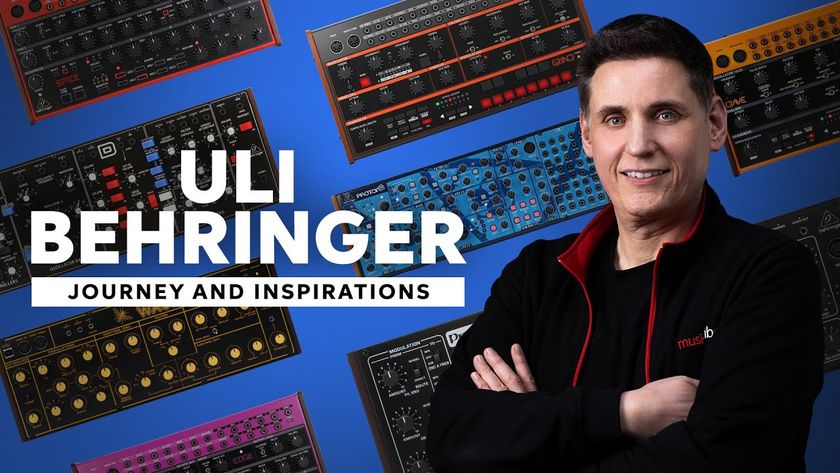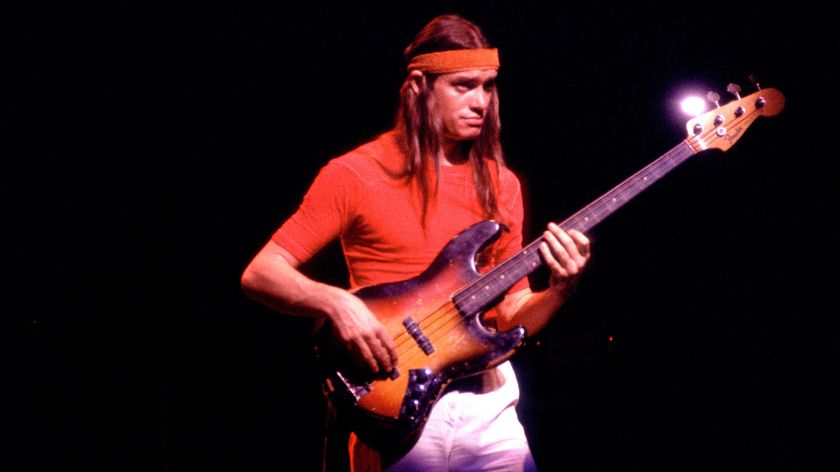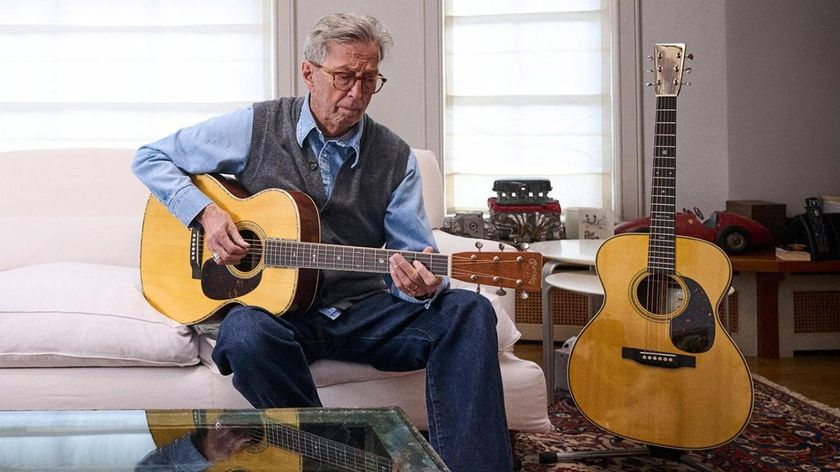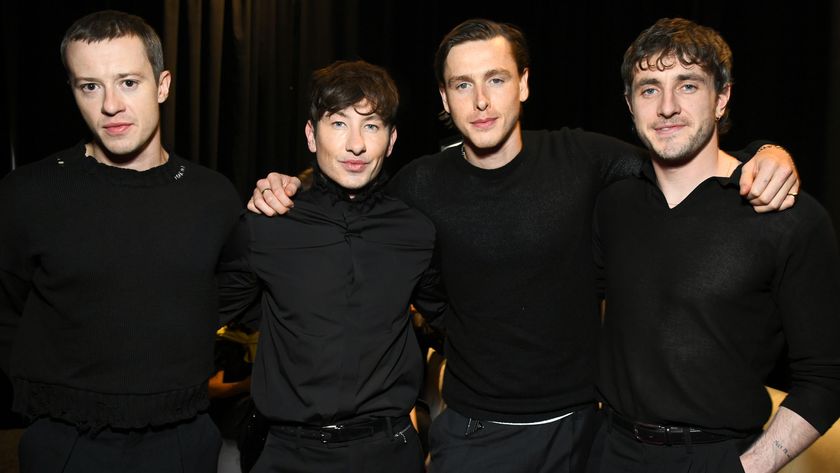Classic album: Meat Beat Manifesto on Storm The Studio
Jack Dangers breaks down Meat Beat Manifesto's classic album track by track
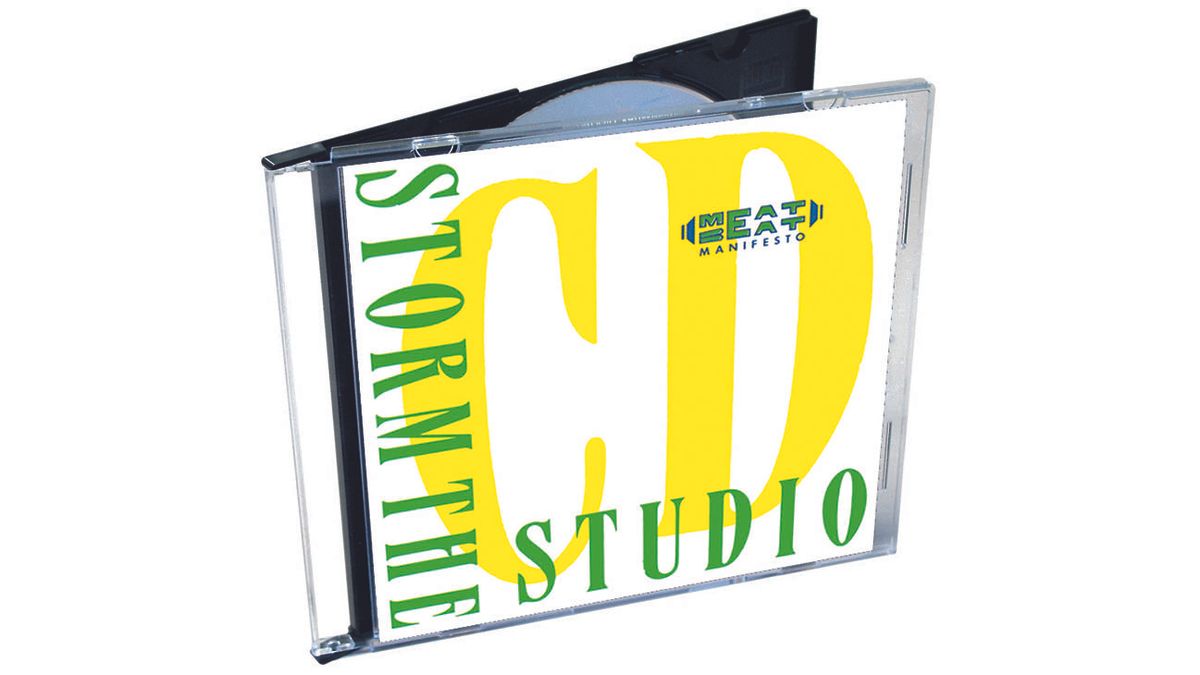
What would you call it back then? ‘High-energy dub’, ‘noise rock’, and ‘industrial hip-hop’ were all bandied around. One thing’s for sure, the music on Meat Beat Manifesto’s debut album didn’t sound like anything else on the shelves when it dropped into record stores in the late ’80s.
The dense, distorted collage of samples, feedback, breaks and politically charged shouting over the top, had more more in common with the magpie Pop Art aesthetic than anything you’d find in the pedestrian dance music charts of the time.
Jack Dangers, a sort of beat maker generation William Burroughs with a sampler, diced and spliced music snatches, taped randomly off the TV, radio and from his record collection, and fed them into the Akai sampler like a shredding machine, then danced dementedly as the pieces rained down on the mixing desk.
“I was screaming my head off doing vocals through the talkback mic, and distorting shit,” says Dangers. “The original idea for Meat Beat was punk, mixed with electronic music. We really hadn’t thought it had been done, at that point, in an in-your-face way. People like The Prodigy would eventually do it, but back then we were going the full whack.”
Recorded over three main studios, often sneaking in across the dead of night to lay stuff down, Dangers and a small gang of co-conspirators, would push the cutting-edge equipment to its limits, searching for that perfect beat.
“It was pretty raucous,” says Dangers. “Things went into the red on the desk. There were times we’d blow the speakers!
“There was so much stuff going on in these tracks. I took all the things I loved, like reggae, early hip-hop, stuff like Cabaret Voltaire and Adrian Sherwood, and put my own slant on it. There wasn’t a tag for that type of music back then.”
Get the MusicRadar Newsletter
Want all the hottest music and gear news, reviews, deals, features and more, direct to your inbox? Sign up here.
Looking back with the benefit of hindsight, the bloodline of breakbeat, trip-hop, big beat, and even jungle, can be traced back to the experiments on Storm The Studio. These tracks sound ahead of their time now, but in 1989 listeners must have felt like their radio had tuned into another dimension.
“Some of these tracks end up in just noise,” admits Dangers with a chuckle. “We didn’t make it for any real market. We just did it for ourselves.”
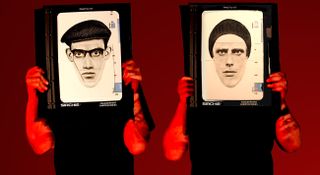
God O.D. (Part 1)
“The first studio was in Swindon, above a motorbike shop. They’d be revving bikes, and I’d stop and re-do bits between the noise [laughs].
“There was a stairwell there where I set the drum kit up. The Chemical Brothers sampled that loop [Song to The Siren]. I spent a good day screwing around getting that sound.
“I don’t have any problems, though. A few other people have sampled me over the years.
“I play bass on this, and the lyrics are in the third person. I say, ‘Genocide means nothing to me,’ but I don’t think that. I wanted to say, ‘Genocide means nothing to you,’ but it didn’t rhyme.”
God O.D. (Part 2)
“The vocals on this are going through the Roland VP-330 Vocoder, which was a rackmounted version they had in the studio we used in Yorkshire called The Slaughterhouse. It really added something.
”That sort of screaming loop is [actress] Shelley Long. I use that as a video sample, live, as well.
“There’s another big bit of movie dialogue in there which would have been captured using a handheld tape recorder in front of a TV, completely randomly when we were in the studio. I’d sample loads of stuff I ended up using on the album like that.
“If you wanted to go back and do a video album of Storm The Studio you could as a lot of it is from video, TV and movies. You could go on YouTube and get all the films and people playing the breaks. Maybe that’ll be a thing one day...”
God O.D. (Part 3)
“The drums on this were made up of a kick and a snare from other things. That was all programmed, not just a loop. Then there was a bit of a porn film sampled on there, as you do.
“I probably got it off a Betamax from under the counter at the local newsagents [laughs]. I taped that using that handheld recorder with a little microcassette in, again. The head was on the tape the whole time. They were really interesting things. You could always whip it out if you heard anything interesting. I always had it on me.”
God O.D. (Part 4)
“I had the keys to the studio in Swindon, and would sneak in there at night. I’d have to do recording like that in one go, before anyone else came in. I did this track like that. It was built around a little loop from a Glenn Branca [American avant-garde composer] record. It had drums, tribal, almost. I distorted them.
“Then I added synth from the studio’s Roland JX-3P. And the vocal hiccup sound was a bit of trapped audio in the Neve AMS. Every ’80s studio seemed to have one.”
Re-Animator (Part 1)
“This is the start of the next bit of vinyl on the LP version. There’s a nice break, some guitar, and me screaming [laughs]. Then you hear David Bowie being gated [Young Americans]. He comes up in a lot of my work.
“There’s also the Ghostbusters saying, ‘We’re ready to believe you!’ I still use that as a video sample! We may be doing a live show at Royal Festival Hall in London sometime soon, so come see how we do all the video stuff now.”
Re-Animator (Part 2)
“This one is based around the Kawai R-100 drum machine, triggering the gate. It’s basically all Kawai, and me doing stuff through the noise gate, and the odd sample here and there, with my vocals and some sax.
“There’s a lot of gating on here. I did it on this whole track. I’d just be playing the sax – Captain Beefheart-style. Just freeform stuff and distorting it, then putting it through the gate and have it open and close.
“I’d not heard that technique so much before I did it. I definitely heard it a lot more after.”
Re-Animator (Part 3)
“This has someone saying, ‘Way up your ass’ [laughs]. DJ Shadow and Cut Chemist used a break I sampled here on their Brainfreeze mix. DJ Z-Trip noted that. I see him when I’m down in LA.
“I sampled a bit of movie dialogue from Apocalypse Now off the TV, again using the microcassette.
“Then there’s a bit of chopped-up guitar in there, too. That was played by Jonny [Stephens, early Meat Beat member]. This track was done in the Swindon studio, as well.”
Re-Animator (Part 4)
“This starts with a news story on AIDS. That’s from a BBC report talking about its negative links to tourism. It was ridiculous back then.
“Andy Butler from Hercules and Love Affair said that this track was a big influence on him, because someone was finally addressing this issue in their music. That was a nice thing to know.
“Musically this is the previous track, slowed way down on the tape machine, played back and dubbed out, in an Adrian Sherwood style. You can hear Jonny playing guitar. It’s just dubbed out, old school, on the desk, with bits played in and passages edited together.”
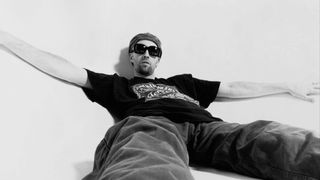
“The Swindon studio was Drive, then we used F2 in Holborn, but the main studio was The Slaughterhouse in Yorkshire. We didn’t pay the full rate and came in in the evening. The equipment varied from studio to studio, but I’d start at mine on the [Tascam] Portastudio, with a crappy Yamaha keyboard sampler. The main sampler in London was the Akai, either S900 or S950. A bit of the 1000 was used. I also used a Roland JX-3P, Juno-106, and the VP-330 Vocoder – a lot. Then the [Roland TR] 606, 808, a Korg Polysix, Yamaha RX5 drum machine, and a Kawai R-100 drum machine. And a lot of Drawmer gating. The way everything was sequenced, because we didn’t have a computer back then, was through the Yamaha RX5 drum machine – just locking it to tape. It limits you in certain ways, as you can’t have too many things going on, but you can’t really overdo it. Then I had Technics decks and a Vestax DJ mixer, for samples and scratching.”
Strap Down (Part 1)
“Not my favourite song on the album. I like the versions that came out of it. This one just plodded on. There were always other things I was working on that orchestrated that happening.
“It’s too long, and there’s too much going on. I admit it [laughs]. We never played it live. We did a video for it, and there was probably too much going on there, as well. It was just a weird period. The main influence was Coldcut, all the cartoon audio stuff they’d use. There’s probably too much of it on here, though.”
Strap Down (Part 2)
“This has some good dialogue in. ‘The needle scratching upon this gramophone’ line is from Wyndham Lewis. It was from the British archive. The band Ultramarine, who Colin [James, another Meat Beat collaborator] was producing at that time… they were using some of that audio off a tape, and I nicked a bit.”
Strap Down (Part 3)
“I say, ‘Strap down, get ready, be refreshed!’ on here. It’s like something from The Milk Marketing Board [laughs]. It was a reference to the word ‘fresh’, which was a good hip-hop word. It was more about electrocution and the death penalty.
“There’s a big piece of dialogue in here from a guy on death row saying, ‘American society loves the taste of blood’. Again that was snatched from TV using the cassette recorder.
“The ‘annihilating rhythm’ sample is Ian McShane - Lovejoy! That’s taken from a Grace Jones track.”
“Storm The Studio came out in February or March of 1989. The album would have come out a year before that, as I’d started it in 1987, but the 2” tapes were being stored in one of the dancers’ flats in Soho and there was a partial fire that destroyed a lot of that work.
Jack Dangers
I Got The Fear (Part 1)
“This was the first single. It’s all about being paranoid. The drum machine was the [Roland TR] 606, I think. I’d use the percussion and distort it. It was a sound that would fill out the track.
“With sampling, the more obvious it was the better it was. On here there’s a breakdown in the middle from Yes’ Owner Of A Lonely Heart. I used that with Prince saying ‘No!’ and Michael Jackson going, ‘Yes!’ It’s important to sample the original records, too. Track them down. Digital stuff gets passed down the line, often ending up in mono.”
I Got The Fear (Part 2)
“The title is from the William Burroughs book, Naked Lunch. The same page where a ‘perennial divide’ is mentioned, which was the name of my first band – that’s the bit of flesh between your asshole and balls. Everyone calls their first band something like that, right? [Laughs].
“The album title, Storm The Studio, is a phrase from Burroughs too. And I sample him saying it. That guy is so influential on everyone from the Soft Machine to David Bowie to Throbbing Gristle. Anyone interested in art, really. Even the Beat Generation didn’t understand that guy. He was always the outsider.”
I Got The Fear (Part 3)
“Most of the tracks on the I Got The Fear part are quite funky. This one is quite go-go, with that D.C. sound.
“Sample-wise the, ‘This is the sound of an invasion’, is from a film about rock ‘n’ roll. Then there’s a Sly & The Family Stone break, a bit of Sister Sledge, some Trouble Funk, and Eric B is in there, and Funky Drummer – I’ve obviously got a thing for that break I mean, who hasn’t? The snare just sounds incredible.
“I’m saying, ‘Hey Gregg, a reanimate, a take a record rejuvenate,’ through the vocoder.”
I Got The Fear (Part 4)
“That’s the Roland JX-3P, again. The horns are Kool & The Gang [Hollywood Swinging]. It breaks down into a big chunk of that, as well. Then more vocoder and some Pointer Sisters. There’s a sample of a rapper saying, ‘And away we go!’ I can’t remember who it is, but I recorded it off a John Peel show. I’d get loads off there from breaks to hip-hop vocals. I was in Swindon, so it wasn’t easy getting new records [laughs].”
Want to know more? Get yourself down to meatbeatmanifesto.com for all the breaking news, tour details, Spotify playlist links, and latest Bandcamp updates.


Future Music is the number one magazine for today's producers. Packed with technique and technology we'll help you make great new music. All-access artist interviews, in-depth gear reviews, essential production tutorials and much more. Every marvellous monthly edition features reliable reviews of the latest and greatest hardware and software technology and techniques, unparalleled advice, in-depth interviews, sensational free samples and so much more to improve the experience and outcome of your music-making.

"Reggae is more freeform than the blues. But more important, reggae is for everyone": Bob Marley and the Wailers' Catch a Fire, track-by-track
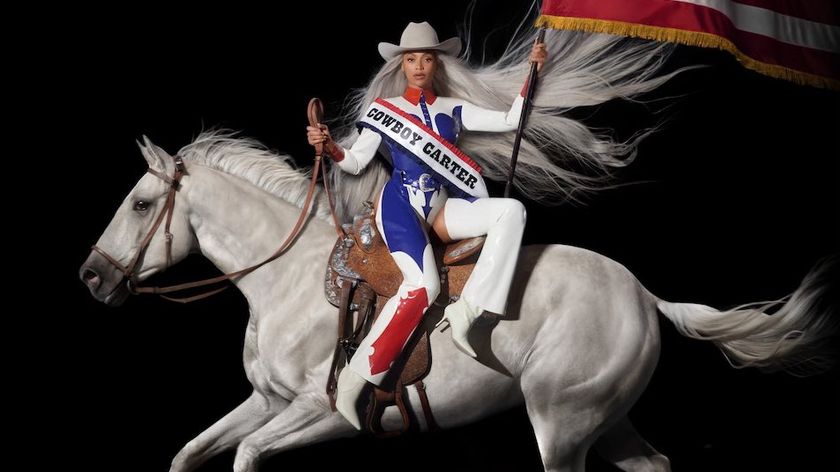
“Part of a beautiful American tradition”: A music theory expert explains the country roots of Beyoncé’s Texas Hold ‘Em, and why it also owes a debt to the blues



![Chris Hayes [left] wears a purple checked shirt and plays his 1957 Stratocaster in the studio; Michael J. Fox tears it up onstage as Marty McFly in the 1985 blockbuster Back To The Future.](https://cdn.mos.cms.futurecdn.net/nWZUSbFAwA6EqQdruLmXXh-840-80.jpg)

